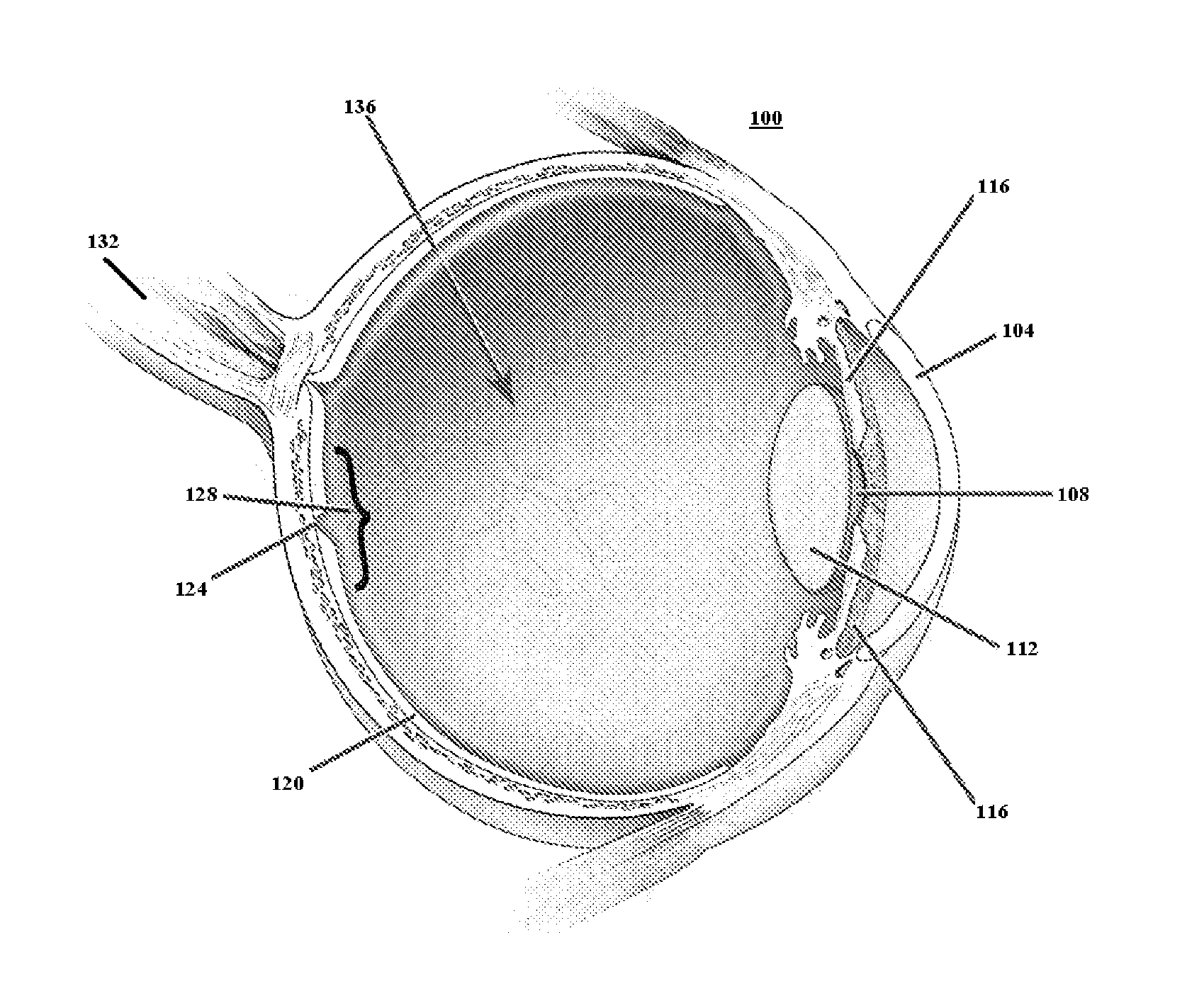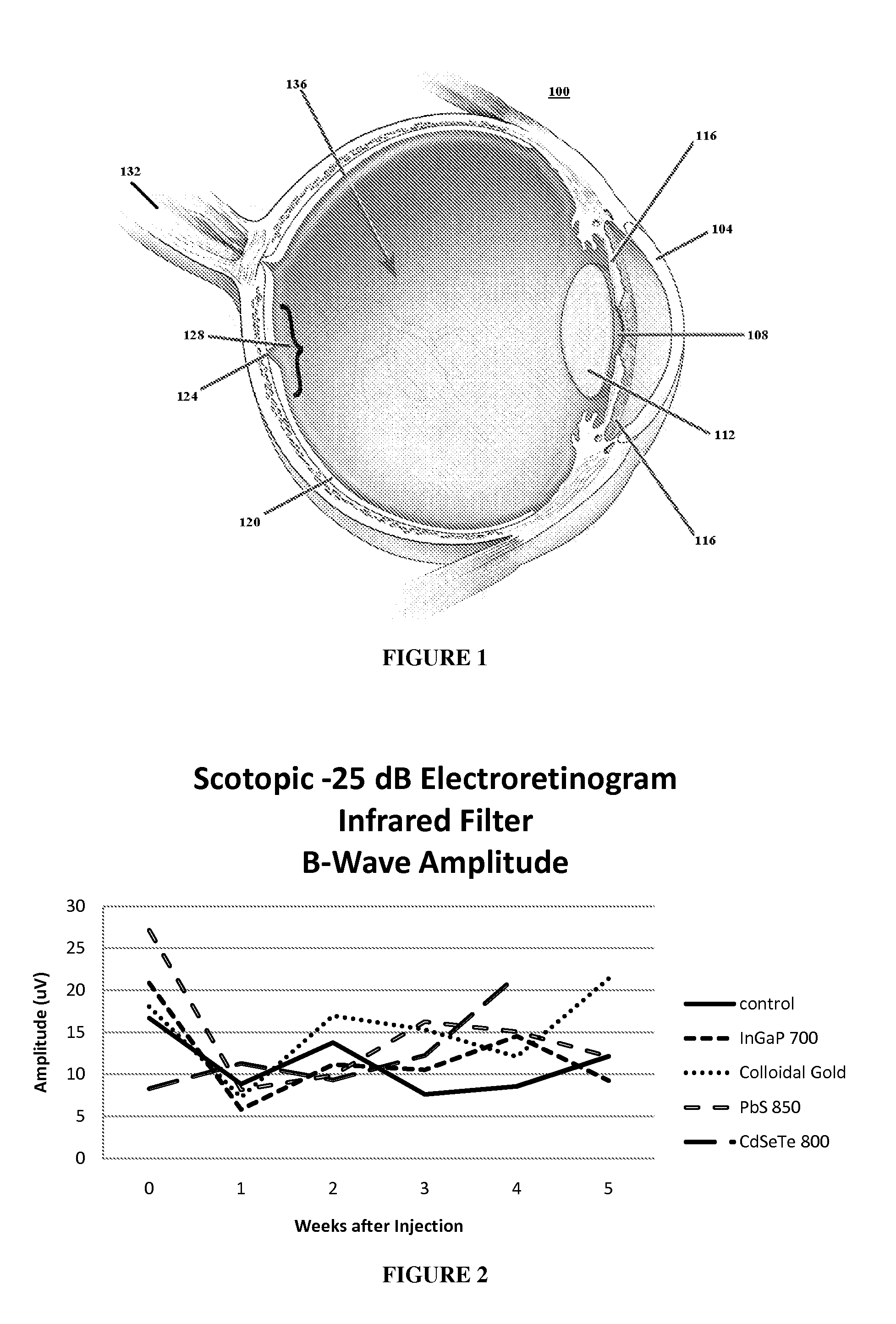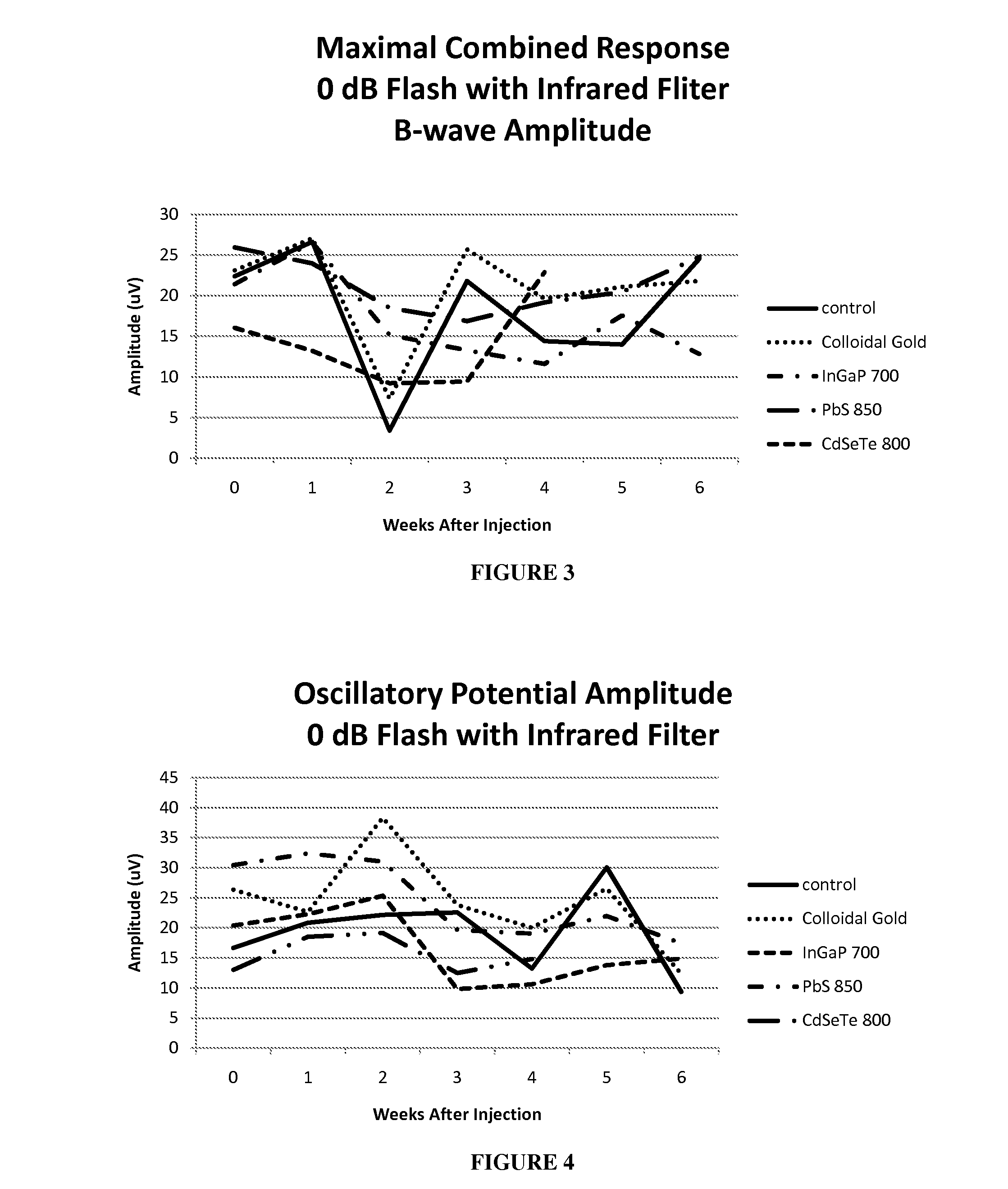Cell stimulation using quantum dots
a quantum-dot and cell technology, applied in the field of quantum-dot cell stimulation, can solve the problems of reducing sight and blindness, blocking significant portions of light, and various forms of neural cell damage or impairment of neural cell function
- Summary
- Abstract
- Description
- Claims
- Application Information
AI Technical Summary
Benefits of technology
Problems solved by technology
Method used
Image
Examples
examples
Animals and Experimental Design
This experiment utilized the Brown-Norway rat, and all procedures were done using animals 4 weeks of age. A total of 20 eyes from 10 rats were used in these experiments. The rats were divided into the following groups: a control group with no intervention and four groups receiving an intravitreal injection of 6 microliters of a colloidal solution of quantum dots responsive to energy in the infrared spectrum. The composition of the quantum dots tested were: indium gallium phosphide (eBioScience, San Diego, Calif.), lead sulfide (Evident Technologies, Troy, N.Y.), cadmium selenium telluride, zinc cadmium (Invitrogen Corp., Carlsbad, Calif.), and colloidal gold (SPI mark, West Chester, Pa.).
Quantum dots can also be prepared as described herein including by Ultrasonic Aerosol Pyrolysis (UAP) method. In this method, the quantum dot size is tuned via variation of the precursor solution concentration or the initial aerosol diameter, which allow control of the...
PUM
| Property | Measurement | Unit |
|---|---|---|
| diameter | aaaaa | aaaaa |
| wavelengths | aaaaa | aaaaa |
| electrical energy | aaaaa | aaaaa |
Abstract
Description
Claims
Application Information
 Login to View More
Login to View More - R&D
- Intellectual Property
- Life Sciences
- Materials
- Tech Scout
- Unparalleled Data Quality
- Higher Quality Content
- 60% Fewer Hallucinations
Browse by: Latest US Patents, China's latest patents, Technical Efficacy Thesaurus, Application Domain, Technology Topic, Popular Technical Reports.
© 2025 PatSnap. All rights reserved.Legal|Privacy policy|Modern Slavery Act Transparency Statement|Sitemap|About US| Contact US: help@patsnap.com



